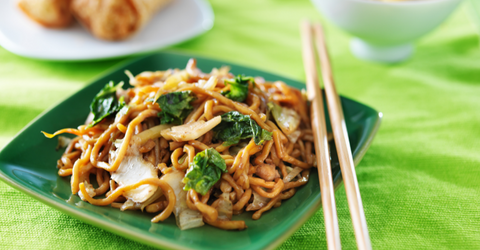

Monosodium glutamate, or MSG, is an additive found in many processed foods (e.g., canned soups, sauces, and condiments). It gives a lot of foods their umami flavor, which is the savory character found naturally in many foods. It is a prized component of cooking that chefs spend a lot of time learning about, but it’s also one of the most controversial additives used in food. Many organizations, including the FDA, claim that it is perfectly safe and even healthy to use (Zeratsky, 2022). The FDA has classified MSG as GRAS: “generally regarded as safe.” Many prominent health organizations agree with the FDA (Cleveland Clinic, 2022). Others, including Frank Dixon in Sustainable Food Production & Diet (2022), cite a link between MSG and obesity. While these debates continue, we are left to wonder whether or not we should consume it.
I have avoided it since I was a teenager because it gives me headaches. Back then, I assumed that Chinese restaurants (one of my favorite cuisines) were the only culprit, and I used to call ahead when going to a restaurant to ask if they used this additive in their dishes. Then I learned that MSG was added to some of the processed foods that I used at home, and that MSG doesn’t have to be listed on an ingredient label if it contains less than 78 percent free glutamate. Because so many condiments and spices I like use MSG, I had to start reading labels on all of the processed foods I bought to see if they contained it. This took a lot of time and energy. It wasn’t until I adopted a whole food, plant-based (WFPB) diet, about 20 years ago, that I stopped buying most processed foods, thus bypassing MSG and a slew of other nutrient-deficient non-foods.
Because I rarely buy processed foods, I don’t have to read labels and worry about what I am eating like I used to. I even make my own spice blends, mayonnaise, salad dressings, and sauces. Doing so guarantees that I have more control over what goes into my body, and the benefits are multifold. The time I used to spend reading labels and recovering from headaches can now be spent in the kitchen, making healthy delicious foods that enrich my life. It is a win-win situation.
I make sure to read all of the labels on the few processed foods I do still buy—vinegars, tamari or soy sauce, miso, etc.—and I make sure to buy from reputable sources that sell spices free of MSG.
Nothing excites me more than sharing my knowledge with others to help them be more self-sufficient in their own kitchens. While researchers debate the good and the bad about additives like MSG, in Live Weekly Cooking Classes with Chef Del we learn how to prepare healthy dishes without it. Our goal in teaching these classes is to give students the confidence to cook healthy meals at home without worrying about what hidden ingredients are in their food. Our recipes are straightforward and approachable whether you are an experienced cook or a newbie to whole food, plant-based cooking. And, we do it all in a fun, relaxed environment.
I hope you’ll join us in CNS Kitchen and our Live Weekly Cooking Classes.
Copyright 2024 Center for Nutrition Studies. All rights reserved.